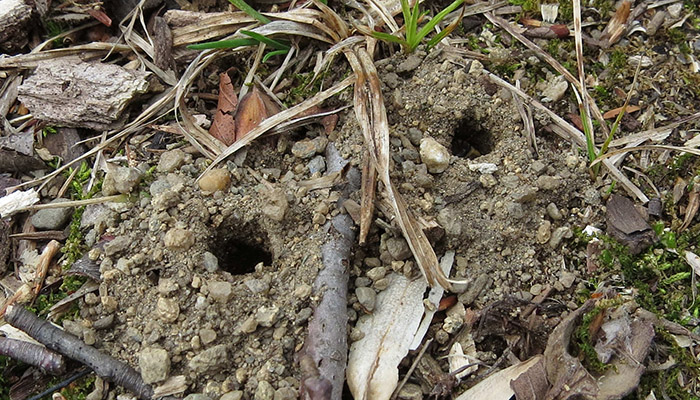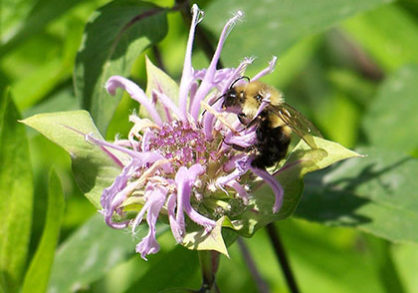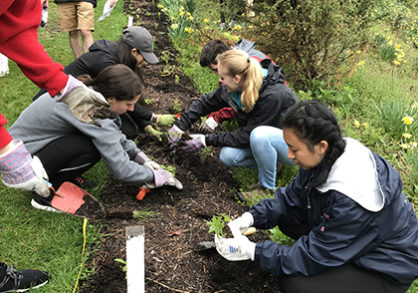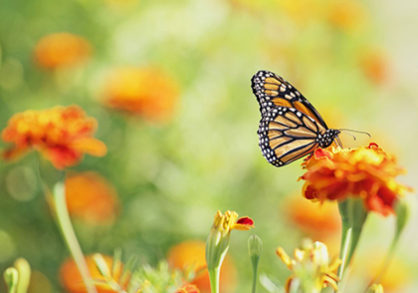Gardening with pollinator plants makes your spaces bloom and helps the planet. Here is a list of simple steps you can take to improve pollinator health in your personal outdoor spaces and community.
- Provide local native plants with a variety of flower shapes and sizes to accommodate the diverse forms of pollinators.
- Plan for at least one species of plant to be in bloom during each month of your growing season.
- Buy local and choose native species whenever possible.
- Leave areas with leaf litter and dead branches year round, especially in the fall to provide overwintering sites for pollinators. If cutting back, leave at least two feet of stems.
- Leave patches of bare earth for solitary bees to nest.

- Make sure you or your lawn care company aren’t using neonicotinoid pesticides—consider pollinator friendly alternatives if you are. Also consider integrated pest management.
- Arrange plants in clusters so that pollinators have an easier time finding them. The Xerces Society recommends, “Many bee pollinators prefer to forage on the nectar and pollen from a single plant species during their foraging outings. Bee biologists call this “flower constancy.” Therefore, grouping plants in single-species masses of five to seven plants is more advantageous for the bees than having just one or two plants or dispersing them throughout the landscape.” Cornell researchers recommend aiming for an area of three square meters per grouping of one species.
- Consider switching to a “flowering lawn.”
- Discuss pollinator conservation with your local representatives.
- Consider providing a small water source, such as a bird bath, to help thirsty insects in your garden.
- Cut back perennials in the spring, not winter, to not disturb any pollinator overwintering sites. If cutting back in spring, leave two feet of stems.
- Some butterflies only lay eggs on a few types of plants. Research endangered butterflies in your area and see what you can plant to support their caterpillars.
- Sow plants with regard to their final sizes so as to make sure they don’t shade each other out.
Inspiration on gardening with native pollinator plants at home can be found in this new resource, “Creating a pollinator garden for native specialist bees of New York and the Northeast.” Staff Gardener Krissy Boys, Field Botanist Robert Wesley, and volunteer Rosemarie Parker contributed to this guide authored by Maria van Dyke and Bryan Danforth. While most pollinator garden planting guides talk about generalist bees, such as honey bees, this new guide provides detailed information on gardening for the native, solitary bees that are critical to biological diversity and that depend on specific plants to raise their young. Published by the Pollinator Network @Cornell.
More About the Buzzline
Check out the buzz!
We invite you to come see our Botanic Buzzline – a flowering pathway that connects people and pollinators to plants.
Useful Websites
Sources and links for further exploration.
Insect Diversity
Besides bees, what other insects and animal are pollinators?


